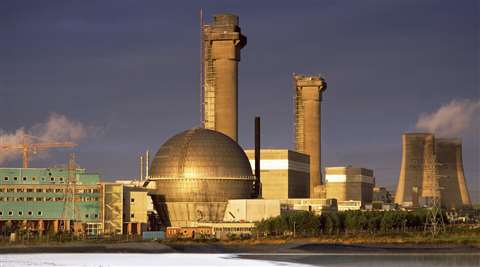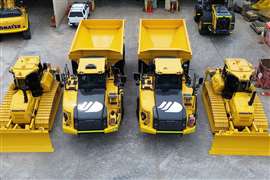Seddon wins place on €209m UK nuclear framework
02 August 2022
 Sellafield Nuclear Facility in Cumbria, UK. (PHOTO: Sellafield Ltd)
Sellafield Nuclear Facility in Cumbria, UK. (PHOTO: Sellafield Ltd)
Construction company Seddon has won a place on a £175 million (€209 million) framework for the redevelopment the Sellafield Nuclear Facility in Cumbria, UK.
According to the facility’s owner, the UK Government’s Nuclear Decommissioning Authority (NDA), the framework will run until 2039 and the full redevelopment of the site will see the building of around £8 billion (€9.5 billion) of new waste management facilities and the manufacturing of tens of thousands of waste containers.
As part of its framework contract Seddon, which has already begun setting up a new office base in Cumbria to support the project, will carry out general construction and fitout works that will support the long-term decommissioning of infrastructure on the Sellafield site.
John Shannon, Divisional Director of Seddon, said, “This an excellent appointment for Seddon as a supply chain partner for the Sellafield Site. We pride ourselves on our expertise and have complete faith in our experience to deliver best-of-kind service over the next 17 years.
“This opportunity will ensure that we, along with other stakeholders, contribute to both the community and regional economy positively over this period.”
Described as “the birthplace of the UK’s nuclear industry”, Sellafield was built in the 1960s for the reprocessing of nuclear fuel made at other sites across the country by the UK’s first generation of Magnox power stations.
Reaching a key milestone, Sellafield’s Magnox plant received its final feed of spent nuclear fuel just before midnight on Sunday 17 July 2022, said the NDA.
“Fuel was fed into the plant’s charge machine, then dissolved in nitric acid to separate out the plutonium and uranium. The same process which has seen approximately 55,000 tonnes of Magnox fuel reprocessed through the facility.”
As well as processing the spent nuclear fuel, Sellafield also stored and continues to store contaminated waste - such as concrete and rubble, metals, sludges, fuel cladding, graphite and flocs - inside tanks, vaults, silos and drums on site.
Among the stored waste is a significant number of fuel rod casings, which had been “removed from used fuel rods from Magnox reactors so that the fuel inside could be reprocessed”.
Just weeks ago teams from Sellafield Ltd - the NDA-owned organisation responsible for the safe operation and clean-up of the Sellafield site - began removing the used fuel rod casings from the site’s Magnox Swarf Storage Silo, in which they had been stored in water-filled chambers for the past 60 years.
The casings, which have been stored in water-filled chambers for the past 60 years, will now be put inside purpose-built stainless steel waste containers and moved to modern storage facility already on the site. A process that utilises a specially designed retrieval machine, and one that is expected to take roughly 20 years to complete.
Head of programme delivery for Magnox Swarf Storage Silo, Chris Halliwell, said, “All of the waste will eventually be sent to a geological disposal facility when that becomes available.
“Once empty of waste, our attention will turn to decommissioning and ultimately knocking down the silo building.”
STAY CONNECTED



Receive the information you need when you need it through our world-leading magazines, newsletters and daily briefings.
CONNECT WITH THE TEAM












